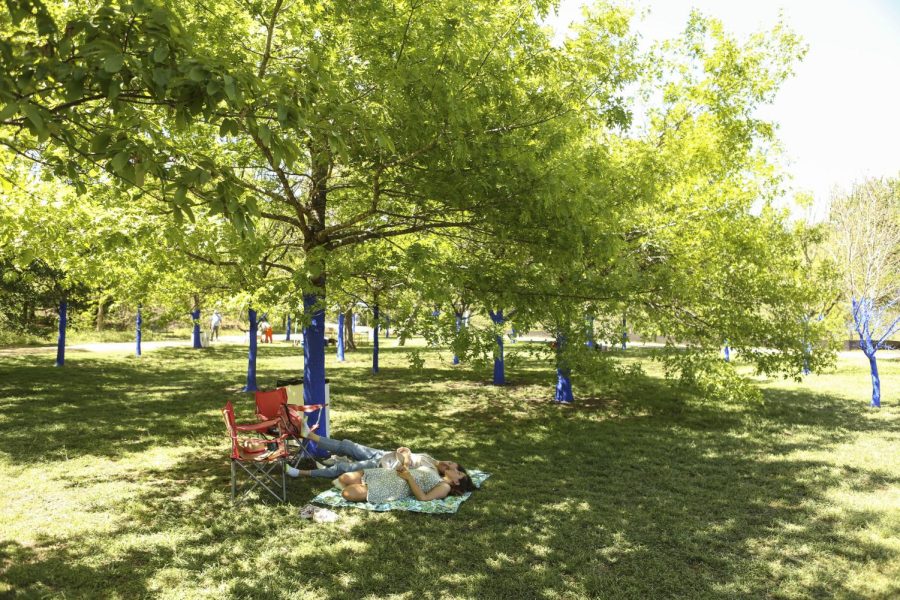UT students, community members paint Pease Park trees blue to bring awareness to deforestation
April 17, 2022
Editor’s Note: This article first appeared in the April 12, 2022 flipbook.
A visit to Pease Park looks a little different this month — the park’s trees display a vibrant shade of electric blue on their trunks.
The Pease Park Conservancy partnered with University program Horns Helping Horns and several other organizations in Austin from March 27 to April 2 to paint the park’s trees blue. The painting is part of an environmental art installation called “The Blue Trees” by Greek artist Konstantin Dimopoulos. Students and community members painted the trees in an effort to bring awareness to deforestation and climate change.
Dimopoulos said he chose the color blue because of its oddity — blue trees don’t exist in nature. He said it is important that the trees stand out so they grab the attention of park visitors.
“Color is a powerful stimulant, a means of altering perception and defining space,” Dimopoulos said in an email. “The fact that blue is a color that is not naturally identified with trees suggests to the viewer that something unusual, something out of the ordinary is happening.”
The volunteers painted the trees with a biologically safe pigment that will wash away over time and will not harm the trees or the environment, Dimopoulos said. The paint’s formula was vetted by Austin’s Urban Forestry Department, the Watershed Protection Department and the Parks and Recreation Department to ensure it was safe, said Allison Johnson, Pease Park Conservancy director of community engagement.
Dimopoulos, who lives in Australia, said he has been in contact with the Pease Park Conservancy since 2019 and gave the conservancy instructions for how to paint the trees over Zoom. Normally, Dimopoulos is physically present for the painting, but he said he participated virtually due to COVID-19.
The conservancy invited groups like Horns Helping Horns to participate on the project as a way to bring the community together after COVID-19 caused a hiatus of community events, Johnson said.
“We had people from preschool all the way up into their 60s who worked on (painting the trees) throughout the week,” Johnson said. “It was a fun, sort of community bonding experience and with some COVID concerns (still) out there, being able to do this kind of project outdoors is a safe way to bring the community together.”
Members of Horns Helping Horns, a University program that provides support for financially independent students, visited Pease Park to paint the trees on April 1. Paige Muehlenkamp, the director of Horns Helping Horns, said she decided to involve the organization in the event because it was close to campus and gave students an opportunity to destress.
“Horns Helping Horns students, and UT Austin students in general, are highly driven and this project was right between midterms and exam time,” Muehlenkamp said. “The opportunity to get outside and work on a fun project seemed like a great way to relax and take our minds off of school for a moment.”
Dimopoulos said he took inspiration from Dr. Seuss’ The Lorax for the project, because like the Lorax, Dimopoulos wants to give trees a voice.
“Dr Seuss is not a scientist nor is his book The Lorax a scientific journal,” Dimopoulos said. “But both he and I use art to talk to and engage children and grown-ups about a serious topic in a way that may get their attention and (get) them more engaged.”











